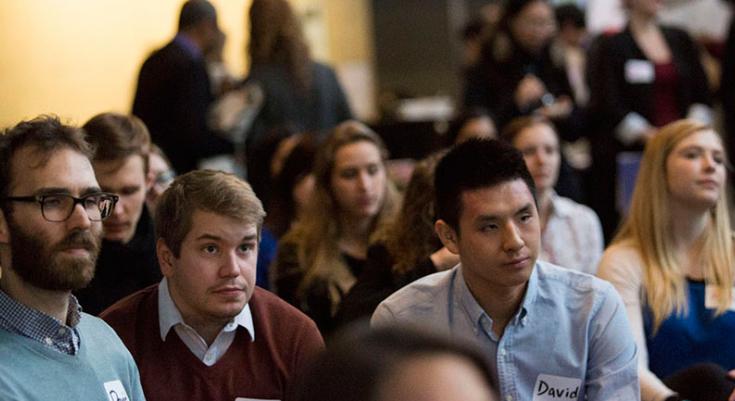
Biodiversity is the foundation of life, and one of the most valuable resource on our planet.
Despite its importance, current patterns of consumption don’t account for the true value of biodiversity, which is why it’s under threat all over the world; some estimates say global biodiversity has gone down more than 50 percent since 1972.
That’s the impetus behind a new biodiversity initiative, launched at a Biodiversity Showcase at Beatty Museum of Biodiversity on March 17, 2017. The initiative is overseen by the SEEDS (Social Ecological Economic Development Studies) Sustainability Program, and like the many SEEDS projects now taking place on campus, is a unique partnership between faculty, staff and Campus + Community Planning, which oversees SEEDS.
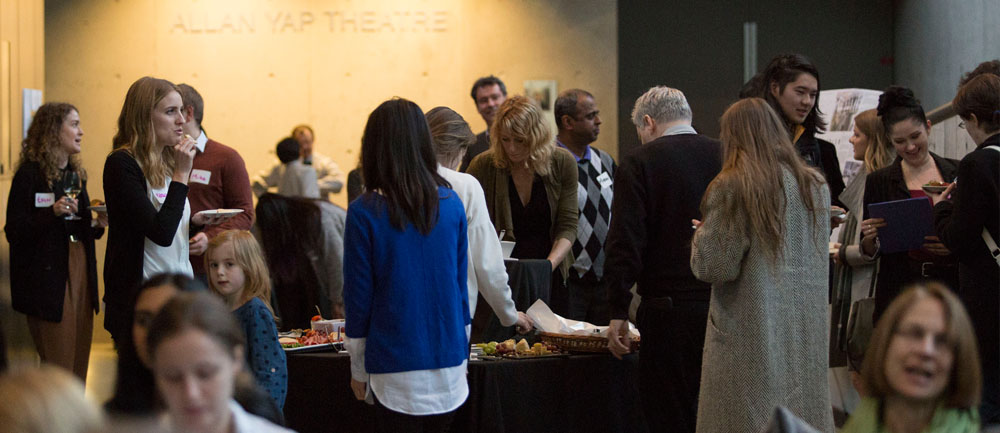
Students, faculty, and staff mingle at the Biodiversity Showcase.
At the showcase, close to a hundred people from many walks of life listened to short talks from two professors, UBC’s Director of Sustainability and Engineering and eight student groups, while munching canapés and drinking wine under the Beatty’s iconic 30-metre whale skeleton. The materials at the event addressed such questions as, “What constitutes the ideal bat house? “ (Hint: it’s made of a mixture of mesh fabric and cotton batting.)
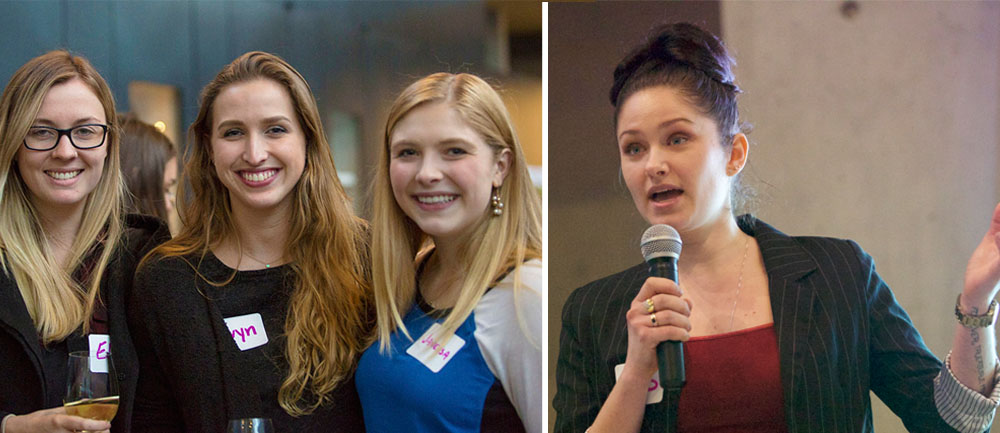
Student presenters at the Biodiversity Showcase.
Take Off Your Earphones and Listen to the Birds!
Liska Richer, Manager of SEEDS, calls the showcase an opportunity to celebrate all the work done on biodiversity over the last year. In that time SEEDS has hired three student coordinators, put together a committee to inform the future development of a UBC Biodiversity Strategy, and begun a staggering 27 projects under the biodiversity umbrella. The next step is the launch of a Biodiversity Portal, an interactive, open-access resource that will help integrate campus-specific biodiversity research across different faculties and disciplines and apply the findings to the campus as a living lab project.
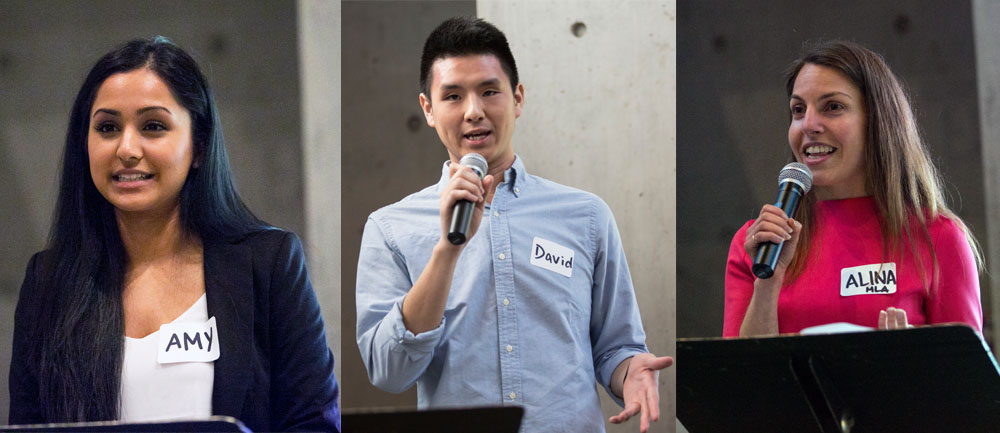
Presenters at the Biodiversity Showcase.
The range of different disciplines involved in the initiative is impressive: six faculties and schools, 12 departments, 72 senior undergrad and grad students thus far, and many more to come as things ramp up.
“Biodiversity is about diversity within and between species, and between species and ecosystems,” explains Richer. “The more diverse something is, the more resilient it is and the better it can adapt to whatever pressures may come along. There are so many aspects, including mental and physical health. Even psychology has a role —take off your earphones and listen to the birds!”
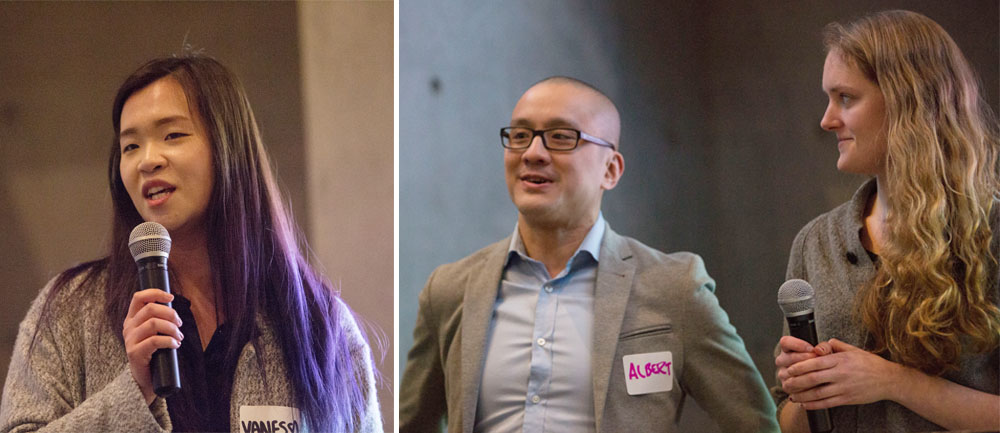
Presenters at the Biodiversity Showcase.
The initiative isn’t just multi-disciplinary; it’s also both local and global. The local aspect means creating research projects to catalogue natural assets on campus so we can better understand our biodiversity and imbed it in a wide range of policies, from installing pollinator homes for bees to developing a UBC Urban Forest Management Strategy.
The international aspect involves work on biodiversity and resilience through the Global Network for Advanced Management project, a partnership of SEEDS and the Sauder School of Business.
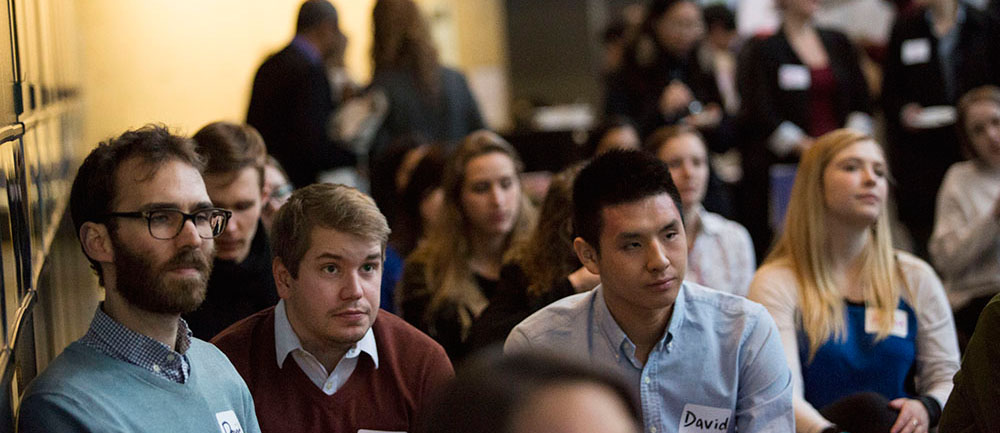
Listening to the presentations.
Our Cities are Teeming with Life
“Biodiversity is the variety of life, including all ecosystems and species — and us, humans,” says Anna Thomas, one of four masters students working on the SEEDS Green Corridor project as part of the initiative. “And it’s really found everywhere, not just in virgin forests but in our cities, on our sidewalks. Our cities are teeming with life, and can support rich biological communities.”
Thomas says biodiversity matters because of all the ecosystem services it supplies, things we take for granted like clean air and water and interacting with nature. “Biodiversity makes human life possible, enhances our quality of life. We need to pay it more attention.”
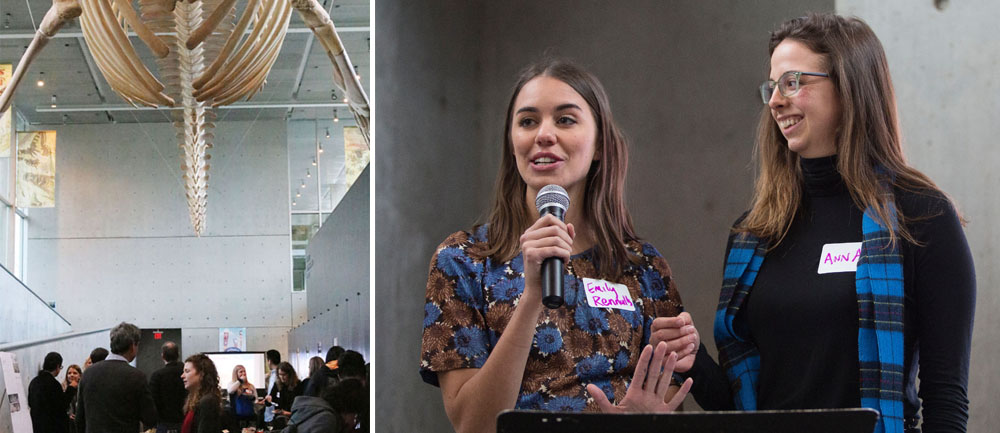
Emily Rennalls and Anna Thomas present at the conference.
The first stage of the SEEDS Green Corridor project focuses on Thunderbird Boulevard and Agronomy Road, which connect Wreck Beach with Pacific Spirit Park. The team is focusing on rain water management and developing small-scale interventions to encourage plant species that provide food and shelter for birds and other species.
As with all the SEEDS biodiversity projects, the aim is to involve a wide range of disciplines and the general public, not just specialists in one field. Thomas is studying landscape architecture, and has been collaborating with Dean Gregory, the campus’s landscape architect; Doug Doyle, Associate Director of Municipal Engineering; and John Madden, Director, Sustainability and Engineering, all of whom work within Campus + Community Planning. Madden hopes to use the study to examine ways to integrate biodiversity into the design of public green spaces and streets, creating green networks to allow nature to thread its way across campus.
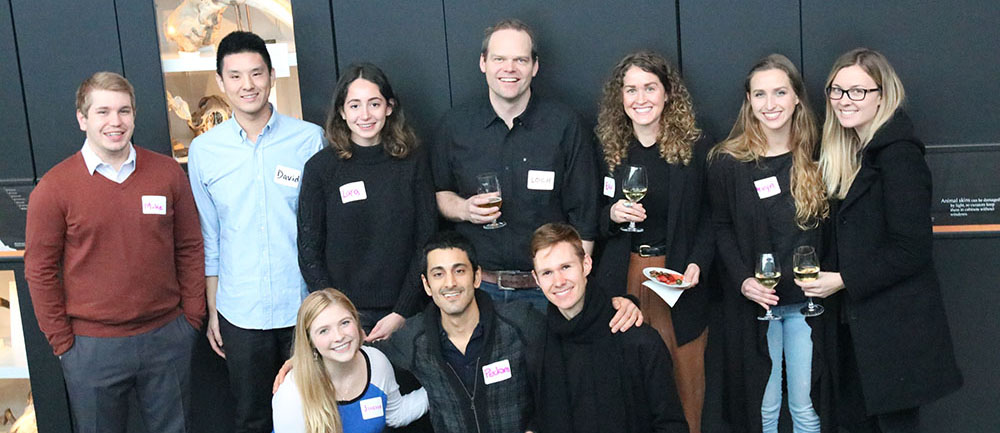
A group of SEEDS students pose for a photo at the Biodiversity Showcase.
Towards an Ecosystems Approach
In his talk at the Showcase, Madden stressed whole-system thinking in policy development. The big challenge, he says, is the relationship between campus growth and biodiversity. We have to stop thinking of competing interests, of seeing this as a battle between wildlife and urban development; “It’s not a zero-sum game; the two goals can be complementary and synergistic.”
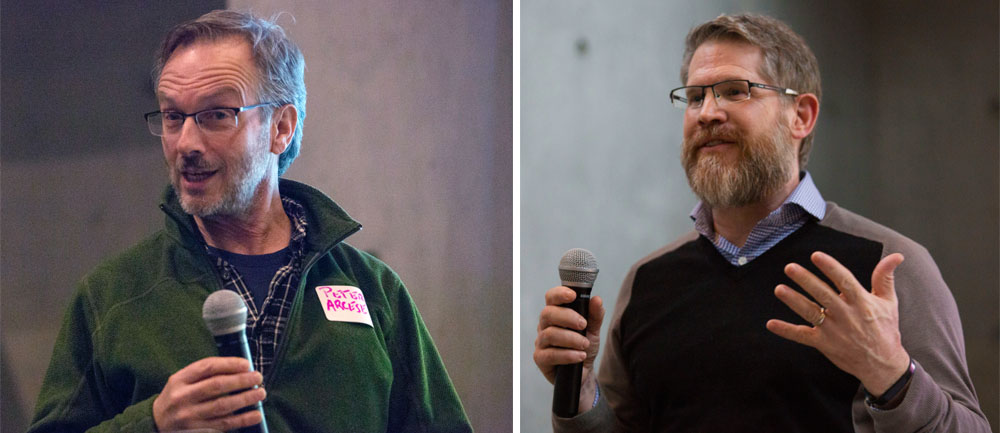
Peter Arcese, UBC Forestry professor and John Madden, Director, Sustainability and Engineering spoke at the event.
Like the other speakers at the event, Madden wondered why we don’t value biodiversity more. The City of Vancouver does; they have estimated that their “Green” brand is worth $31 billion. And 62% of students base their choice of a university on the appearance of its buildings and landscapes. These things matter.
Biodiversity can also help us mitigate and adapt to climate change. The new UBC Green Building Plan, currently under development, has a fresh emphasis on biodiversity, identifying opportunities for green roofs, passive design, storm water management, rainwater harvesting and bird-friendly design guidelines (the focus of yet another SEEDS project).
“We’re moving towards an ecosystems approach, a systems-based approach,” says Madden. “As John Muir reminds us, everything is connected.”
“Systems thinking is essential schooling for sustainability.”